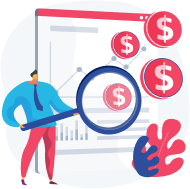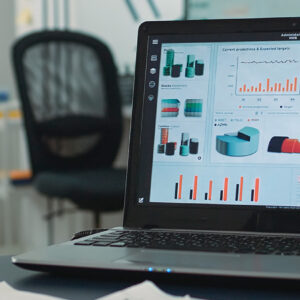Imagine telling your grandchildren how beautiful and filled with flora and fauna Earth is, and then they find nothing left on Earth that can be called beauty or life. Here is what we are talking about sustainability. To achieve it, we need to start sustainable Living or say a sustainable lifestyle.
What is Sustainable Living?
Here is the core idea. We use resources without using them, and in simple words, we use resources while reducing waste, conserving energy, and respecting the environment. It’s not about living like cavemen or sacrificing everything you love. It’s about making intelligent choices in our daily lives that help the planet and often ourselves, too!
Also, sustainable Living is a trend these days. But some myths need to be broken so that people understand the essence of a sustainable Lifestyle.
- Sustainable Living is expensive. You can use a cycle instead of a bike for a shorter distance. You can save fuel and money both!
- Sustainable Living is only about recycling and composing. They are essential, but the spectrum of sustainable Living includes eating choices, modes of transport, supporting local businesses, planting, etc to promote local sustainability.
Core principles of sustainability
There are three core principles of sustainability, often known as three pillars: Environment, Economy, and social equity. Let’s discuss this in more detail:
- Environment: At the heart of sustainable lifestyle is environmental sustainability, which emphasizes conserving and restoring the natural environment. This aspect involves responsible resource management, reducing waste and pollution, and protecting ecosystems. It’s about ensuring that our daily activities, from food to energy, do not deplete or harm the Earth’s natural resources. This pillar is essential for maintaining the planet’s health and biodiversity, enabling it to support current and future generations.
- Economy: Economic sustainability, another crucial facet of sustainable lifestyle, focuses on developing an economy that supports environmental health and human welfare. It includes promoting green businesses and jobs, encouraging sustainable production and consumption patterns, and investing in renewable energy and technology. This pillar ensures that economic growth does not come at the expense of environmental degradation or social injustice. Sustainable economic practices lead to a resilient economy that can adapt to environmental challenges and contribute to our society’s overall health and stability.
- Social Equity: The third pillar, social equity, is integral to sustainable lifestyle. It involves creating a fair and just society where everyone can access basic needs like clean air, water, healthcare, and education. This pillar focuses on reducing inequalities, ensuring community well-being, and promoting inclusive participation in decision-making processes. Social equity in sustainability means that the benefits and responsibilities of living sustainably are shared among all people, regardless of their background, thus creating a harmonious and inclusive community that supports the well-being of all its members.
Benefits of Sustainable Living
- Environmental Protection: Adopting sustainable Living is like caring for a loved family member. We use resources gently and avoid creating waste, much like how we’d treat our home, to ensure it remains a safe and nurturing space for future generations.
- Economic Benefit: When we choose sustainable Living, it stimulates new economic opportunities. It’s about nurturing green businesses and jobs, like tending to a community garden, ensuring it flourishes while respecting the Earth’s delicate balance.
- Improved Health: Sustainable Living intertwines with our well-being. It’s like walking in the fresh air and enjoying meals made from locally grown produce. It’s a personal path to wellness, filled with simple, natural joys.
- Energy Efficiency: It’s about embracing energy-smart choices that benefit our planet and pocketbooks. It’s a thoughtful way to save, bringing a smile to our faces and the Earth.
- Community Building: Sustainable Living strengthens our community fabric. It’s about sharing, collaborating, and supporting each other, like coming together for a neighborhood potluck. It’s not just about living; it’s about creating a warm, interconnected community.
- Resource Conservation: By using resources wisely and reducing waste, sustainable Living ensures that vital resources like water, minerals, and forests are conserved for future generations, maintaining the planet’s health and resource availability.
- Long-term savings: Embracing sustainable choices can be likened to planting a tree. Some efforts require patience and initial investment, but in time, they yield abundant savings and benefits, much like the shade and fruit of a mature tree.
- Ethical Responsibility: At its essence, Sustainable Living is about making decisions with heart and purpose. It’s a commitment to thoughtful choices using renewable resources, water conservation, and saving the environment for future generations.
Tips for beginners to start a sustainable living
For beginners, Sustainable Living can be overwhelming. So here are some tips to begin with sustainable practices.
- Embrace the Art of Simplicity: Think of reducing, reusing, and recycling as a lifestyle art. Start by asking yourself if you need something before buying it. Find creative ways to reuse items and become a recycling pro at home.
- Turn Your Home into an Energy Oasis: Swap out those old bulbs for LEDs like you’re adding a new piece of art to your home. Unplugging devices is like restocking them; choosing energy-efficient appliances is like selecting the best tools for your sanctuary.
- Water Wisely: Treat water like a precious elixir. Fixing leaks is like healing your home; using low-flow fixtures is like choosing gentle rainfall over a storm. Every drop saved is like a small thank you to the planet.
- Journey Joyfully: Make your travels an adventure. Walk or bike like you’re exploring, share rides like you’re gathering with friends, and use public transport like you’re on a community voyage. Each trip becomes a step towards a cleaner world.
- Savor Sustainability on Your Plate: Meal planning becomes an exciting food adventure. Explore plant-based recipes like new culinary territories, and choose local and organic as if you’re a gourmet. Reducing food waste becomes a creative kitchen challenge.
- Choose Earth-Friendly Finds: Shopping for eco-friendly products can be like a treasure hunt. Look for goods with minimal packaging as if they are rare gems, and support businesses that are allies in your sustainability quest.
- Become a Sustainability Scholar: Dive into the world of sustainability like a curious student. Read, watch, and listen to expand your eco-consciousness. Knowledge becomes your tool for change.
- Join the Green Team: Participate in local eco-initiatives like you’re joining a team sport. Whether it’s a community garden or a clean-up day, every action feels like scoring a goal for the planet.
- Consume with Care: Think of shopping as a choice of impact. Pause and ponder before buying, and when you do, pick second-hand or ethical brands like you’re curating an exhibit of your values.
- Be a Sustainability Storyteller: Share your eco-journey with others like you’re telling an inspiring story. Your experiences can spark change in others, turning each conversation into a ripple of environmental action.
Challenges Faced During Sustainable Living
While adopting a sustainable lifestyle has benefits, it also comes with some challenges.
- Upfront Costs: Often talked about sustainable living issues; upfront costs. It’s like saving for a quality backpack that will last years. Investing in things like solar panels or energy-efficient gadgets can initially be heavy on your wallet, but they’re worth it for long-term gains.
- Finding Green Options: Sometimes, hunting for sustainable products feels like searching for hidden treasures. Whether it’s renewable energy solutions or organic food, these choices are only sometimes readily available and can be pricier.
- Learning New Ways: Stepping into sustainability can be like learning a new language. There’s so much to absorb about how to live more earth-friendly, and it’s a journey filled with constant learning and discovery.
- Changing Old Routines: Shifting our habits for the planet is like trying a new recipe – it takes some experimenting. Adjusting things like our travel methods or what we eat can be challenging, but exploring new ways of Living is exciting.
- Dealing with Complex Rules: Navigating the world of environmental policies can be as confusing as a maze. We need clear and supportive guidelines that encourage sustainable Living, but sometimes, these policies are a mixed bag and hard to follow.
- Technological Limitations: Our tech tools for sustainability are still evolving, much like early versions of a helpful gadget. There’s progress, but we still can make renewable energy and other green technologies more efficient and widespread.
- Ensuring Fair Access: Only some people are equal when going green. For some, it’s like starting a race several steps behind – we must ensure sustainable options are accessible and affordable for all.
- Embracing Change: Adopting a sustainable lifestyle can meet with resistance, like trying a new food for the first time. It can be challenging to step out of our comfort zones as individuals or within larger organizations.
Conclusion
Sustainable Living is becoming an essential aspect of our daily lives, and Zoftware is here to help you quickly find software solutions that support a sustainable lifestyle. Zoftware offers a user-friendly platform that simplifies identifying and utilizing various software tools and applications that encourage sustainable practices.
Whether you aim to reduce your carbon footprint, implement energy-saving techniques, or engage in more sustainability-focused activities, Zoftware provides access to a range of software options designed to assist in achieving your sustainable living objectives.
Sign up now at Zoftware to discover the ideal software solution for your sustainable lifestyle.
Frequently Asked Questions
- What is the meaning of sustainable Living?
- Sustainable Living refers to a lifestyle that seeks to reduce an individual’s or society’s use of Earth’s natural and personal resources, aiming to minimize the environmental impact for the benefit of future generations.
- Why is living sustainably important?
- Living sustainably is essential because it helps preserve our planet’s resources, reduces environmental damage, and ensures a healthier, more stable world for future generations.
- What is called sustainable?
- “Sustainable” describes practices, methods, or products that do not deplete or permanently damage natural resources, supporting long-term ecological balance.





